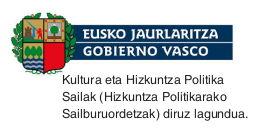Agurain’s municipal granary during the crisis of the Ancien Régime, 1765-1840
DOI:
https://doi.org/10.26876/uztaro.98.2016.3Keywords:
Grain trade · Pre-industrial agriculture · Food crises ·Public granarAbstract
The productivity of pre-industrial agriculture was low, and so was the level of inte- gration of grain markets. As a result, food crises were a common occurrence. Throughout the Hispanic Monarchy municipal public granaries were created to fight food shortages, assist producers, and maintain social peace. Their presence became particularly important after 1765: first because the 1765 grain trade liberalisation caused repeated food supply problems, and secondly because production became stagnant and numerous wars broke out in the final decades of the eighteenth century. The resulting economic and social turmoil lasted for decades and is conventionally known as the crisis of the Ancien Régime. In this article we analyse the effectiveness of Agurain’s municipal granary during that crisis. We also compare the quantity of wheat lent to farmers for sowing with local wheat productionDownloads
Download data is not yet available.
License
Copyright (c) 2016 Uztaro

This work is licensed under a Creative Commons Attribution-NonCommercial-ShareAlike 4.0 International License.
Downloads
Published
2016-08-01
How to Cite
Lamikiz, X. (2016). Agurain’s municipal granary during the crisis of the Ancien Régime, 1765-1840 . Uztaro. Giza Eta Gizarte-Zientzien Aldizkaria, (98), 55–77. https://doi.org/10.26876/uztaro.98.2016.3




















